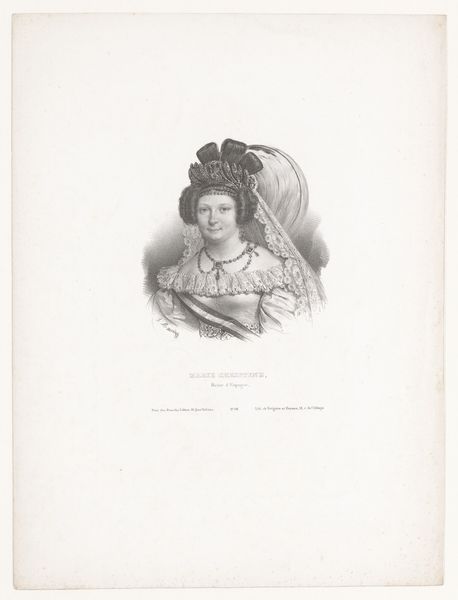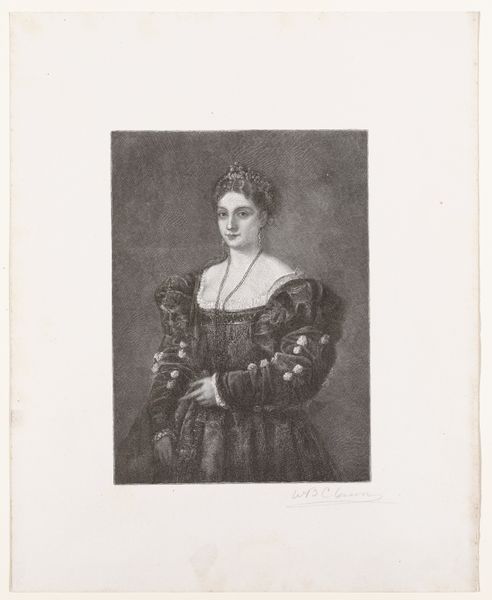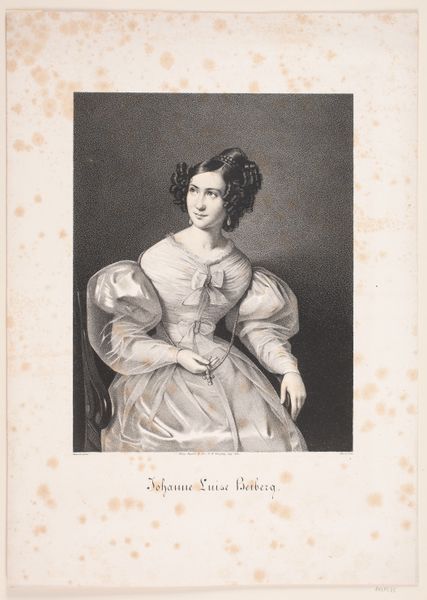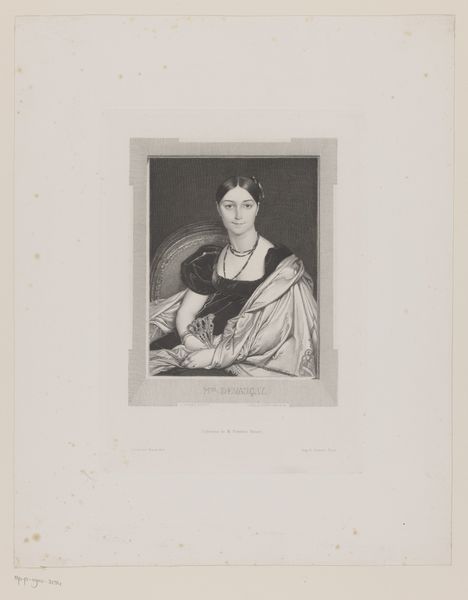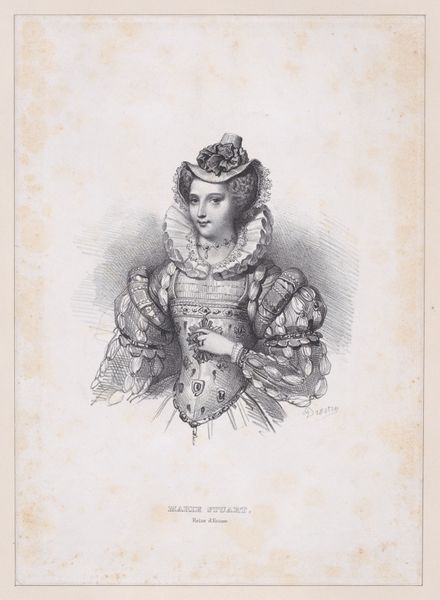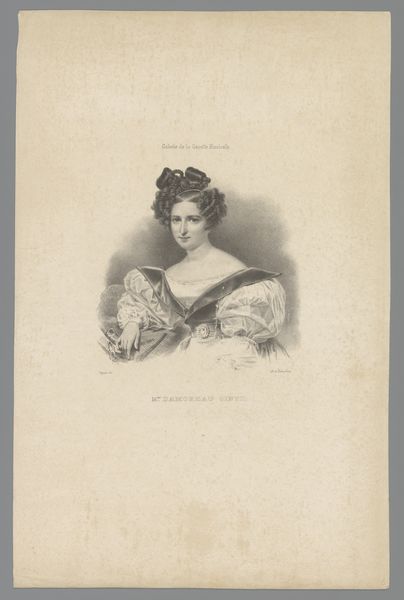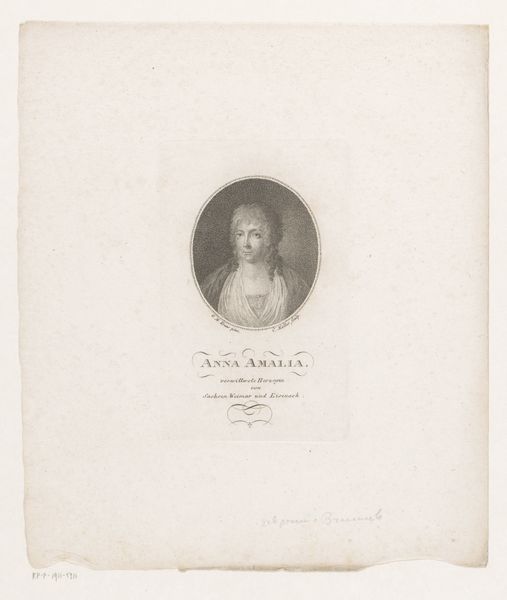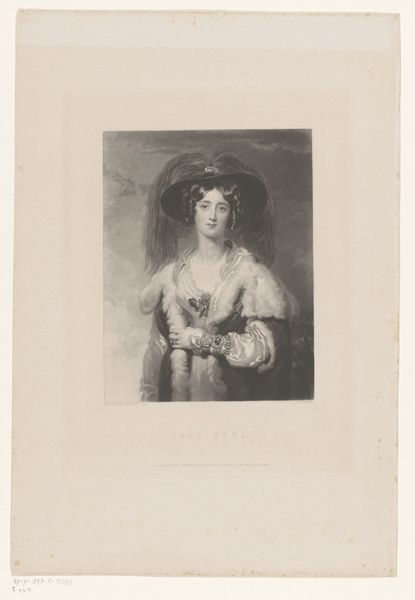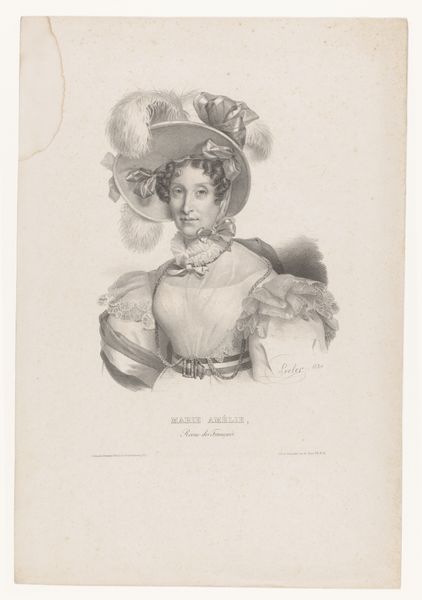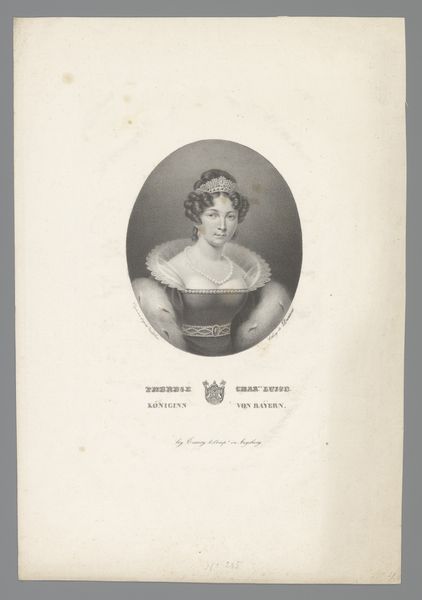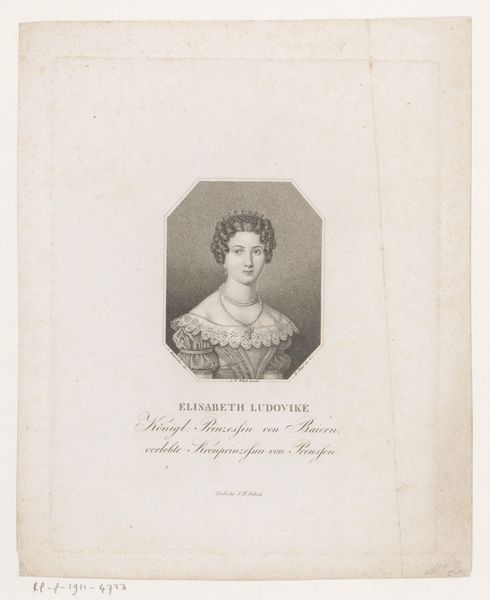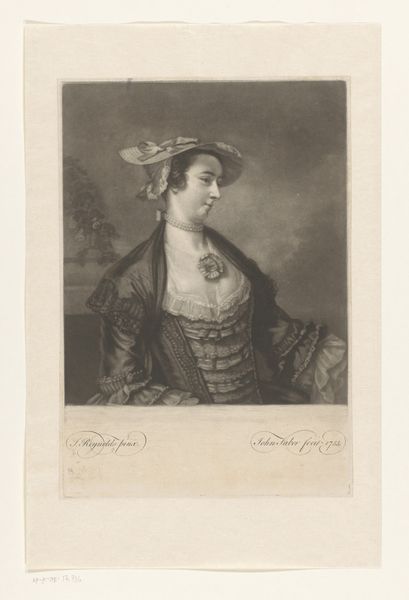
print, engraving
#
portrait
#
pencil drawn
#
neoclacissism
# print
#
pencil sketch
#
old engraving style
#
engraving
Dimensions: height 202 mm, width 136 mm
Copyright: Rijks Museum: Open Domain
Editor: This is "Portrait of Maria Christina, Queen of Spain," created between 1829 and 1834 by Friedrich Fleischmann. It's an engraving. It has such a formal, almost severe mood to it. What do you see in this piece? Curator: Well, immediately, I think about the role of portraiture in legitimizing power. Look at the detail lavished on her clothing and jewelry. It’s clearly intended to project authority, not just personal likeness. We also need to remember the historical context: the rise of printmaking allowed for wider dissemination of these images, meaning royalty could cultivate their image much more broadly. How do you think the medium impacts the message? Editor: That's fascinating. The engraving, because it can be reproduced, makes the Queen’s image widely accessible, more of a commodity, but doesn't that somehow reduce the impact and the symbolic importance compared to, say, a unique oil painting only accessible to a select elite? Curator: It's a balancing act. Wider circulation makes her visible and, ideally, fosters a sense of connection with the populace, while also maintaining a sense of distance and decorum. The somewhat cold Neoclassical style, its clarity and control, are there to communicate stability. Do you notice any elements in her clothing that communicate status? Editor: Absolutely, the extravagant lace, the jeweled necklace, and that elaborate headpiece with the veil - they are such obvious markers of wealth and status. I hadn’t thought about how this image being reproducible reinforces or amplifies power and how its availability actually changes its role. Curator: Precisely! It encourages us to think about the public role of images and the messages they were designed to convey in a specific historical and social setting.
Comments
No comments
Be the first to comment and join the conversation on the ultimate creative platform.
